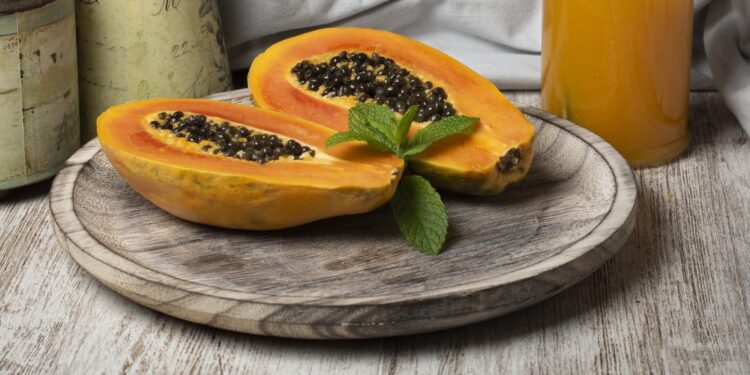
National Papaya Month
June is National Papaya Month, and that means we all get to enjoy the plant Carica papaya, a fruit first domesticated in Mesoamerica, now Central America and southern Mexico. Nowadays, papaya is increasingly grown in India, which, as of 2022, produces over 44% of the world’s supply of papayas.
This is the perfect month for people to purchase some delicious papayas to eat whole or to use in their day-to-day cooking. Regardless of how this fruit is consumed, there are numerous health benefits associated with it.
Papayas protect against heart disease, help boost the immune system, and some studies even suggest that they might protect against prostate cancer. Not bad for a colorful fruit that’s only celebrated one month out of the year.
The History of National Papaya Month
At this time, we’re unable to uncover who invented this month or when it was established. We’ll continue to investigate National Papaya Month to see if we can determine its origins, but right now, it doesn’t appear we’re going to find the answers we’re looking for. Anyone who knows the origin of this month can go ahead and drop us a line.
Interesting Facts About Papayas
We love papayas as much as anyone, and that’s why we wanted to create a little section of fun facts about this fruit. So without hesitating any further, please check out our bevy of beautiful papaya plants that we’re sure everyone is going to love. We know we did.
- Papayas are also known as pawpaws.
- Papayas grow on the Carica Papaya Tree.
- There are two varieties of papayas: Hawaiian and Mexican.
- Papayas are rich in fiber, Vitamin C, folate, B vitamins, and minerals such as copper and magnesium.
- In a 3.5-ounce serving of papayas, there are 43 calories.
- Some studies suggest that papaya leaf tea may be useful in fighting certain types of cancer.
- The bark of the Carica Papaya Tree is often used to make rope.
- Papayas are grown not only in India but also in Brazil, Indonesia, Nigeria, and Mexico.
- Hawaii is the only U.S. state to grow papayas commercially.
- In just 18 months, a papaya tree can go from a seed to a 20-foot tree.
- Papaya seeds taste like black pepper, and in some countries, they are used instead of black peppercorns.
Observing National Papaya Month
Want to observe National Papaya Month? If you do, then just pick up a papaya! Yep, that’s all there is to it. Grab a papaya, eat it whole, cook with it, and/or share it with friends and family. That’s all there is to it. You can also use the hashtag #NationalPapayaMonth on social media to share what you intend to do with papayas during this month. Yes, that would also be acceptable.








